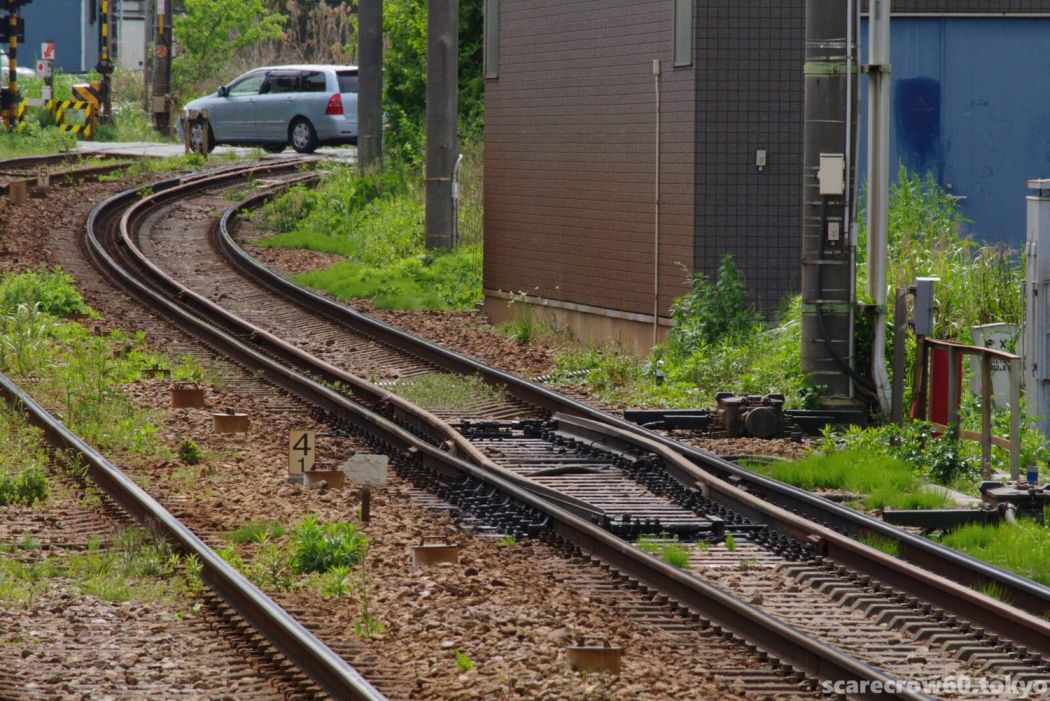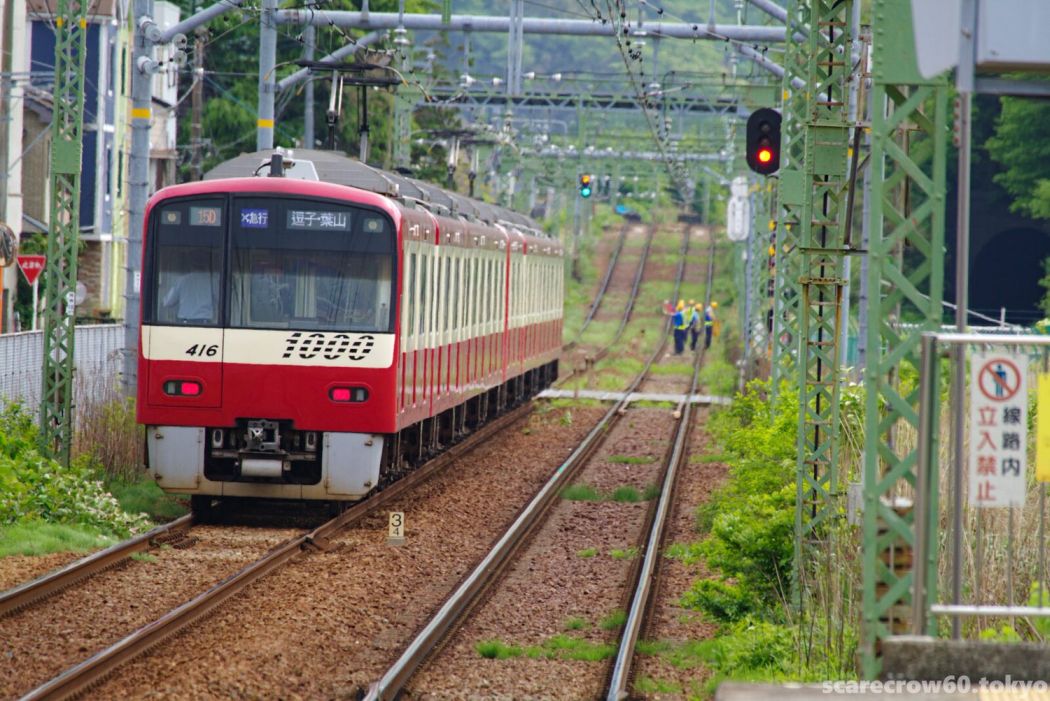In this installment, I, a casual traveler, talk about the “3 line rails crossing” of the Keikyu Zushi Line.
As a basic knowledge, most Japanese railroad tracks are either standard gauge (1435mm) or narrow gauge (1067mm) (with some exceptions such as Keio Electric Railway). Incidentally, Shinkansen and Keikyu lines use standard gauge, while JR conventional lines and Tokyu lines use narrow gauge. Please keep in mind that there are two types of track widths when reading the following.
The rolling stock factory of the General Rolling Stock Works (former Tokyu Rolling Stock) is located between Kanazawa-bunko and Kanazawa-hakkei Stations of Keikyu Line, and the rolling stock made here is supplied to not only Keikyu but also JR and private railway lines nationwide, both standard gauge and narrow gauge.
Keikyu cars can be sent directly from the standard gauge track that is drawn into the plant to the Keikyu line, but narrow gauge cars for JR and other lines cannot be sent directly from the plant. Therefore, another rail is laid inside the two rails of the Keikyu line to make it a 3 rail track, so that narrow-gauge cars can run only on the necessary sections (from the factory to Kanazawa-Hakkei and Mutsu-ura, and then to the “Watari Line” that connects to the JR line before Jinmuji). The narrow gauge cars can also run on this line.
Re-recording. The three-line gauge seen at the foot of a train stopping at Mutsu-ura Station.
So Keikyu trains run on rails on both sides, but when JR trains run, they use the narrow gauge rails on the inside.
As you can see, the narrow-gauge rails on the platform side are laid a little farther from the platform than Keikyu’s standard-gauge rails. The narrow-gauge rails are laid so that the narrow-gauge cars can pass through at a greater distance to prevent contact with the platform.
However, there is a problem here. At Kanazawa-Hakkei Station, which is adjacent to the station in the direction toward the back of the photo above, the platform is located on the opposite side, so if the rail position remains the same, narrow-gauge trains may come into contact with the platform at Kanazawa-Hakkei.
Therefore, a point was installed between Mutsu-ura and Kanazawa-Hakkei Stations to switch the position of the third rail for narrow gauge to the opposite side, and a 3 line rails crossing was performed, which is unique in Japan.
It is easier to understand if you see the actual point. Kanazawa-Hakkei is in the back and Mutus-ura is in the front. The position of the narrow-gauge inner rail is reversed before and after the “crossing” point.
By the way, there is a “crossing” point on the other side of Mutsu-ura station that puts it back together again.
To illustrate, this is what happens.

The two photos above correspond to the two “P “s in Fig. As the narrow gauge cars “cross” the three tracks at “P”, the cars on the top two rails at positions 1 and 3 (in the figure at position 1) change to the bottom two rails at position 2. This avoids contact with the platform at both Kanazawa-Hakkei and Mutsu-ura stations.
The branching scenery before Jinbuji Station, as seen from the car, looks like this. The two double-track lines on the left go toward Jinmuji Station, and the one on the right toward the “Watari Line” to JR.
Isn’t it kind of exciting to think of all the hard work that went into bringing these new vehicles and then leaving the nest from here?
The 3 line rails crossing is only used in special situations where the new narrow-gauge cars run on this section of track. It is a little regrettable that it is difficult for us to actually see the moment of the activity.
*At this point, I actually have a question.
I understand why there is a “3 line rails crossing” between Kanazawa-Hakkei and Mutsu-ura (to move the cars away from the platform). But what is the purpose of the “crossing” between Mutsu-ura and Jinmuji to put it back again? Since there is no longer any risk of contact with the platform after that point, it seems to me that it would be better to just branch off toward the JR line without bothering to undo it. Someone tell me!
Equipment used this time K-3III, DA20-40, DA55-300PLM



